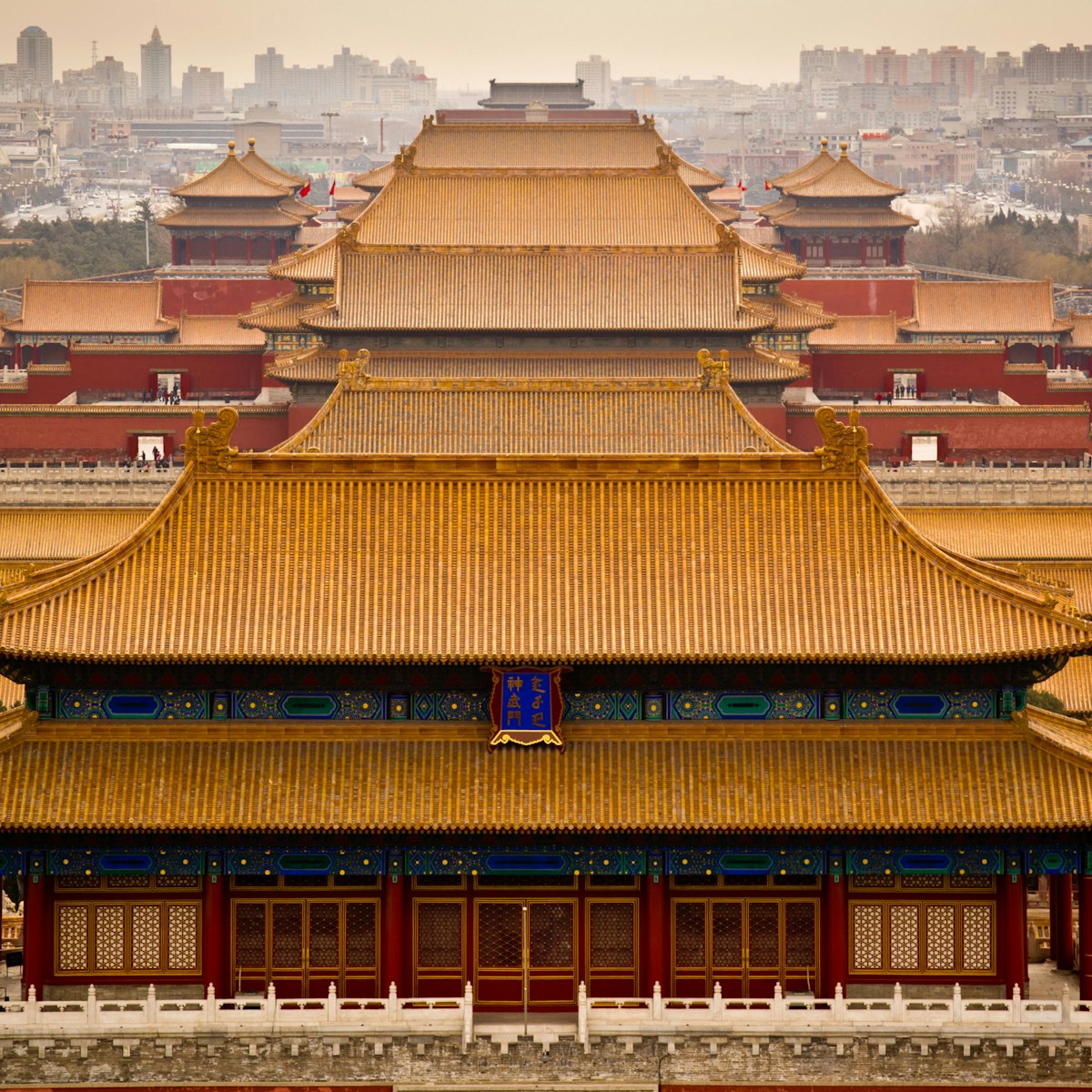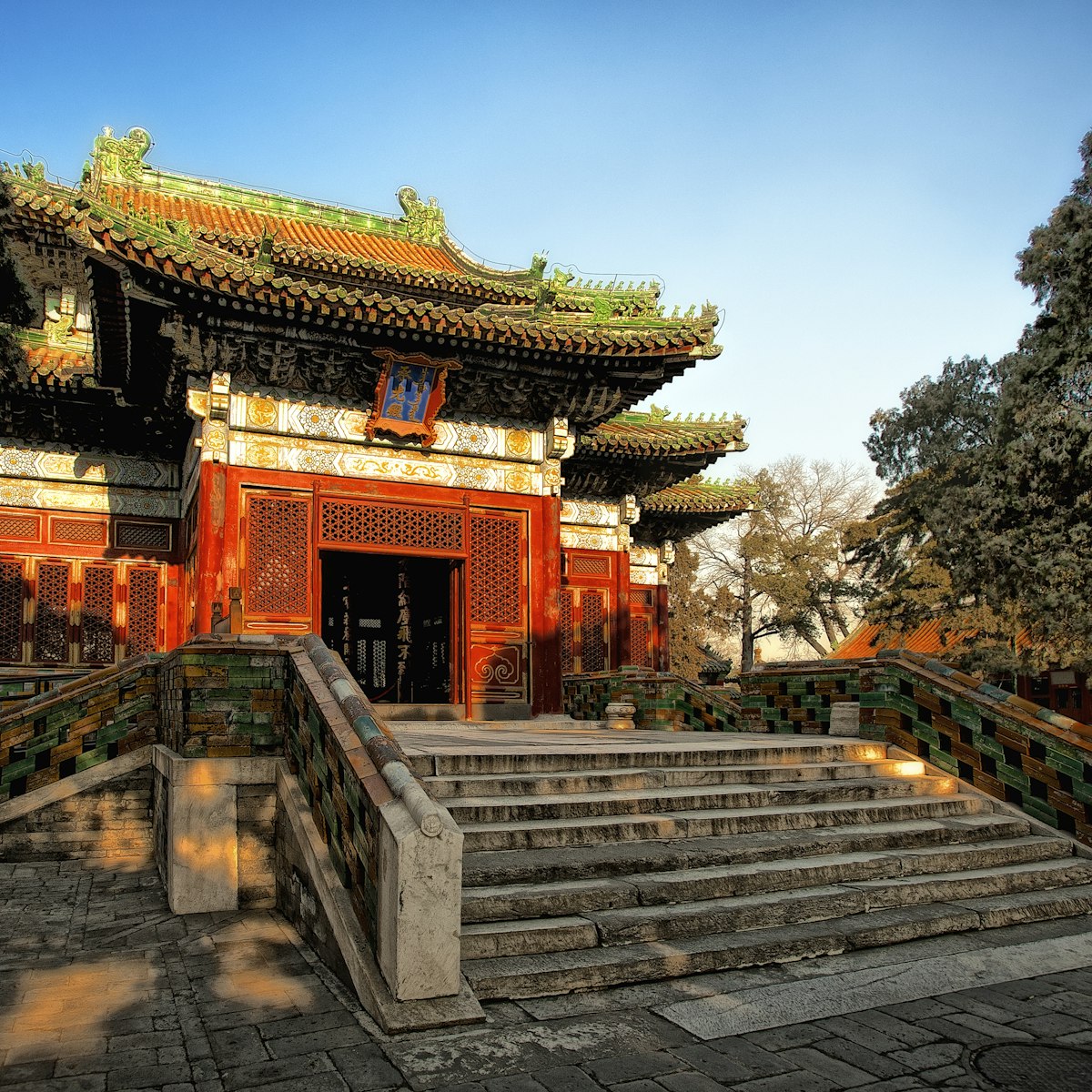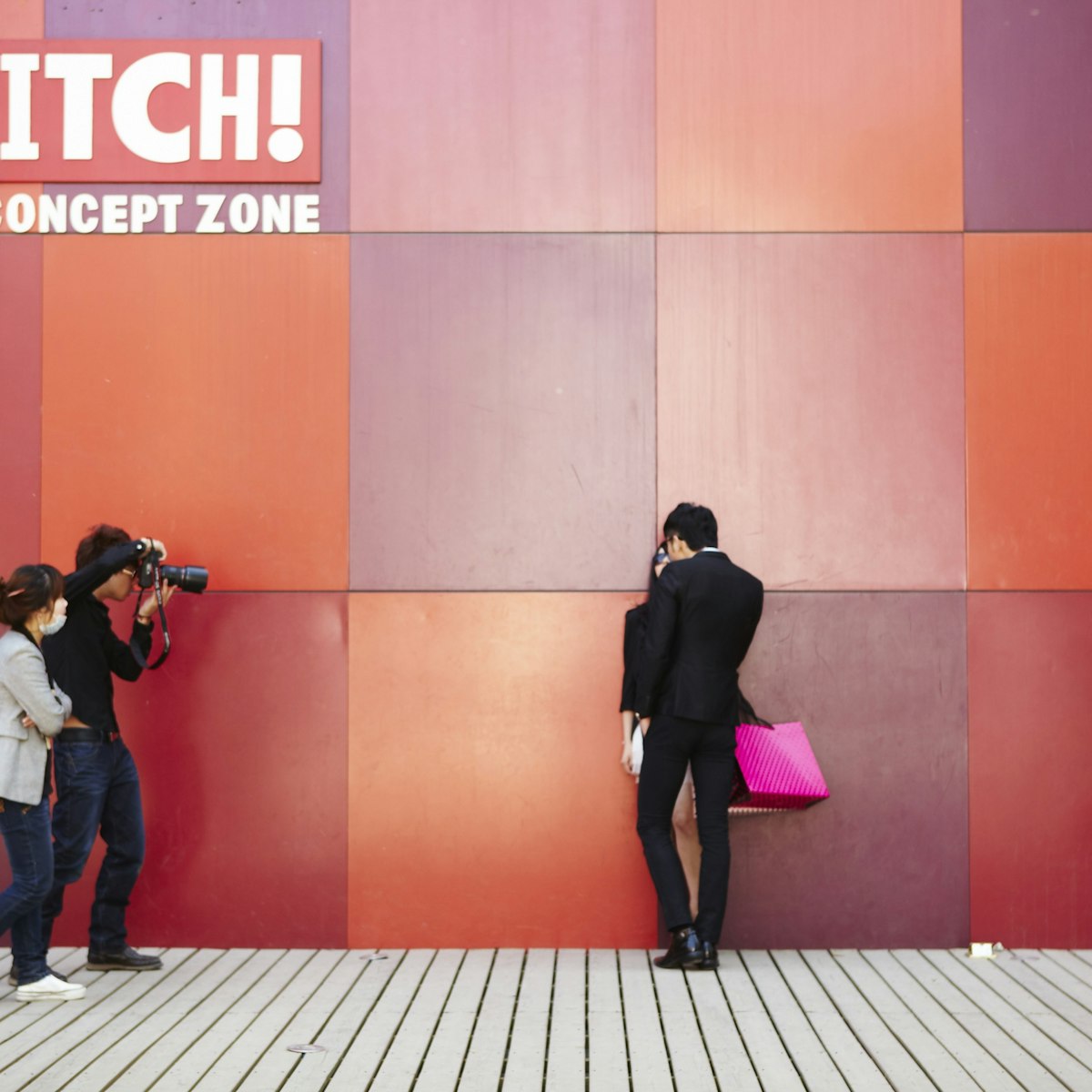This wistful stretch of brick and stone is all that remains (besides a couple of other denuded nubs) of Beijing's once formidable city walls, girding the capital since the early Ming dynasty. The walls have been dismantled piecemeal since the 1950s, making way for the 2nd Ring Rd and Line 2 of the Beijing subway. A park at the wall's base makes for a pleasant stroll through the past.
The wall runs eastwards from the former site of Chongwen Gate (崇文门, Chóngwénmén), one of the nine gates of the Inner City Wall, to the Southeast Corner Watchtower. Chongwen Gate was also known as Tax Gate (税门, Shuìmén) as the capital's tax bureau was located just outside. The wall extends for 1.2km, rising to a height of around 15m with defensive buttresses every 80m.
In 1996 this scrap of wall, concealed by weeds and being used as a rear wall for buildings, was to be removed to make way for a hotel. When it was realised the remains were largely Ming in origin, it was instead preserved. The Beijing Evening News ran a 'donate bricks' campaign, asking residents to return original wall bricks that had been repurposed for other uses, to aid in the restoration. In total over 30,000 Ming and Qing bricks were received, and 2700 residents relocated.
The park also contains a restored signal house of the old Beijing–Fengtian Railway, which ran just outside the city walls here.








